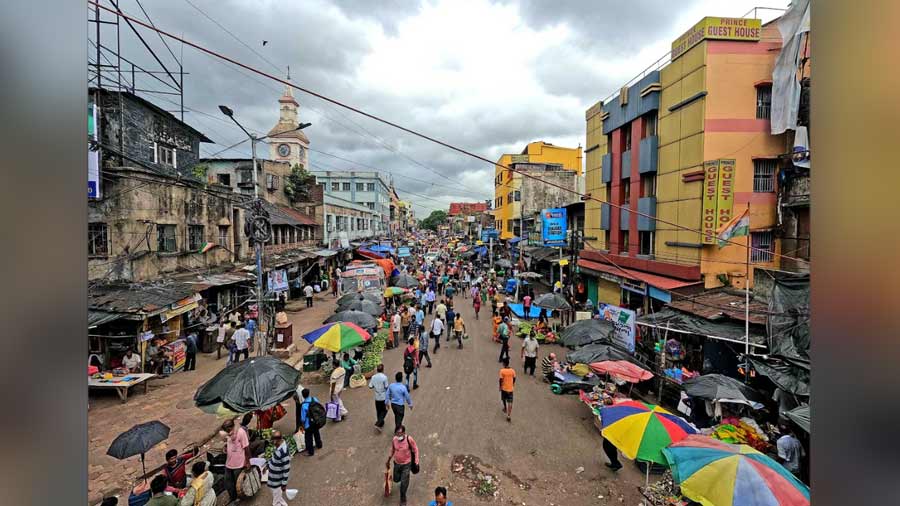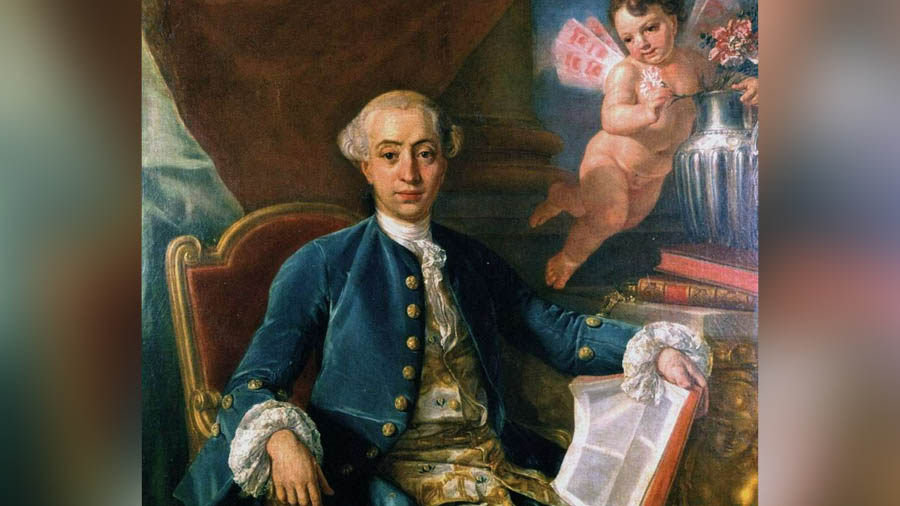Numbers 36 and 37, Acharya Jagadish Chandra Bose Road, Kolkata 700014 is an address that Kolkata folks pass by on countless occasions but most know of the place as Mullick Bazaar near Beniapukur, and not by its address.
For most in the city, especially the well-heeled, this is a place that continues to be eminently avoidable given its present appearance and existence but then again for an equally large number of individuals, this unorganised market stands at crossroads between regular sustenance of life and utter hopelessness.
That ageing Uber or Ola that has arrived for your service is possibly still able to perform its duty, thanks to the presence of this market at ‘Mullick Bazaar’.
And, in many ways, a lot more automobile wheels in the city continue to turn, thanks to this rather questionable presence in the city. And for those car owners and their precious rides crippled for want of that special gasket or bracket or even a suspension strut, perhaps even a logo – this ‘dubious’ market is like a beacon of hope.
How the market came into being

Most crucial parts even engines can be brought to life again, courtesy the skills of generations
The origin and importance of this section of the market can be traced back to the days of the British colonialists when ‘Calcutta’ was the capital of India, leading to the year 1911 and thereafter, after which the capital was moved to Delhi, today’s New Delhi. Calcutta thus was the natural business hub of the country and it is also fair to say that innumerable items of luxury, daily use and even innovative items that can all be clubbed as antiques today came to be concentrated in this city. This happened to be true of automobiles as well as makes such as Standard, Morris were found in the households of the city’s gentry regularly.
Enterprises relevant to automobiles that are seen even today began here at almost the same time that such vehicles made their presence noticeable in the city homes. Thus, all that we see here today are offshoots of a business that began well over a hundred years back in time. It has been that long those businesses here are working with spare parts and repairing parts and entire vehicles.
Though many are not prepared to accept the other section of the market created out of the road that bisects the two are the same. In the days of the British, this market used to be called Sam’s Bazaar – thereafter the ownership passed on to the famed Mullick family of Calcutta namely Gopinath Mullick, Radhanath Mullick and Bholanath Mullick among others. What is seen today are sections that have been added over time. The market flourished in those early times but thanks to online footprints of the recent and modern days - business in every section has been going downhill.
Growth of automobile section – in the past and today
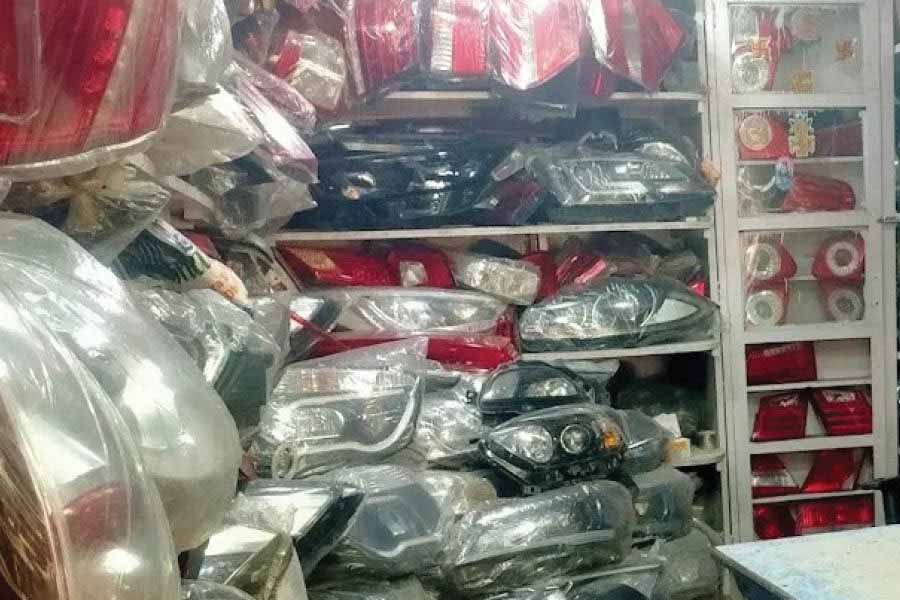
Light accessories brought back to sparkle again
Mullick Bazaar is where old cars are dealt with, in the sense that they are cut up and serviceable parts are passed on to specific dealers to be reconditioned and resold to those who need such crucial and essential parts and spares. Even a few decades back, there was not much stringency about this and cars used to be cut up rather unscrupulously and with virtually no administrative control.
But somewhere down the line, say about 20 years ago, an incident did occur where a car that had been stolen, had been ‘cut up’, and needless to say, a hue and cry had been raised.
Thereafter, the rules of the business were altered and it was made mandatory that all the relevant papers of any vehicle that was to be ‘cut up’ had to be submitted to the local police station, in this case – the Park Street police station and only after their consent was acquired, could the dealers proceed with the dismantling.
That system exists in full force even today. What then happens to the many sections of a car that have been dismantled? The serviceable parts are saved for future business and others that are complete write-offs are sold off as scrap metal.
It must be appreciated that Mullick Bazaar caters largely to a section of the working population who need to earn money every day and cannot afford to have their vehicles sit idle as they wait for spare parts either from the companies or from the spare part dealers. Again, there is an element of finance in this as most car makers are in the habit of ensuring that spare parts do not come cheap. That’s exactly where Mullick Bazaar continues to make its mark – by making available the very same working condition spares at a quarter or even less of the original price.
Many readers would agree that the price of original company spares is alarmingly high and vehicle owners cannot hope to afford those rates given the modern-day economic requirements that dictate lives and businesses. The need to be back on the wheels and on the roads, earning the daily bread, ensures that many drivers first do the Mullick Bazaar circuit before going to the car companies for the repair work.
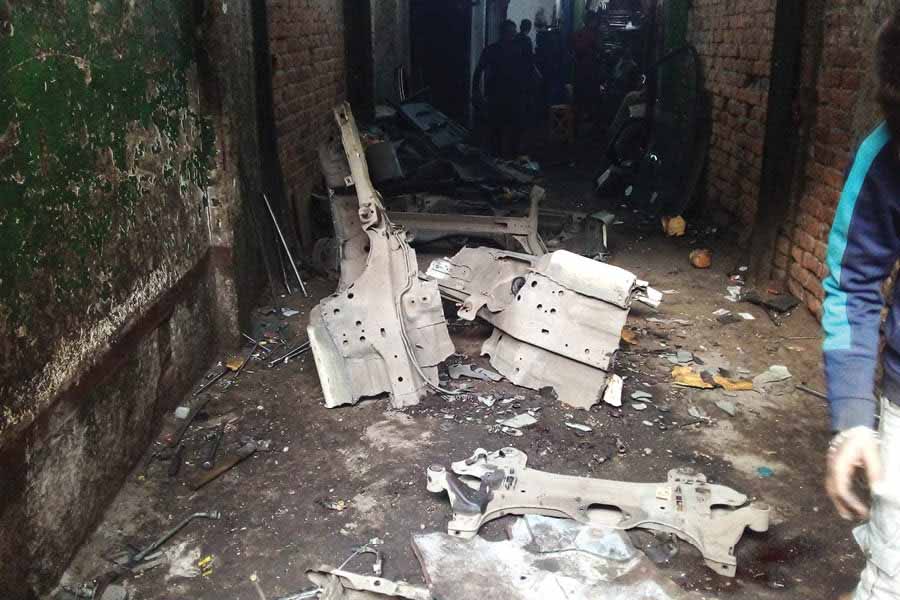
A vehicle a while ago, now only in sections - readied for the spares market
Of course, the advent of newer technology and new vehicles has necessitated that the dealers here modify and adjust their businesses accordingly. The younger generations of dealers here are more attuned to these changes and it’s sad to note that those stocking spares of older generation vehicles such as Ambassadors and Jeeps hardly manage a single sale in a day. The necessity of keeping the home fires burning has led to a situation where the dealers are compelled to bring in spares and other materials from other parts of the country and sell the same here. This also means that a market that was largely disorganised and existing from one day to another is today complete with all sorts of necessary paperwork such as GST registration and trade license amongst others.
Modernity has also ensured that from a market that thrived under the individual expertise of uneducated mechanics and dealers today boasts of nearly one hundred percent literacy.
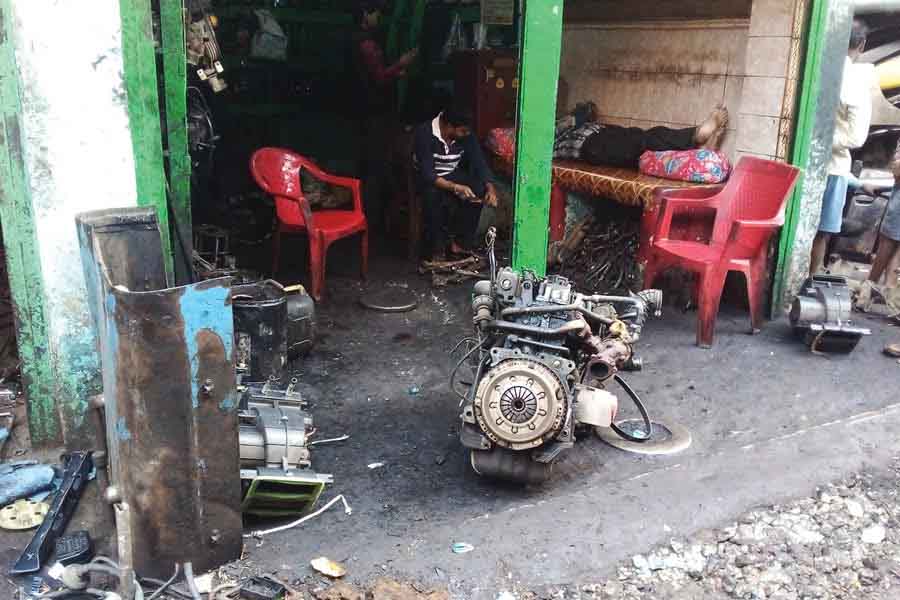
Most crucial parts even engines can be brought to life again, courtesy the skills of generations
Here it is also necessary to mention that most of those conducting business here are from the states of Bihar and Uttar Pradesh and only about five per cent of the dealers are the old-timers of the earlier days of the market. The present incumbents are the descendants of those people who were driven by hunger and circumstances to move to a big city to eke out a living either as a garage helper or as a labourer. That ensured a deep desire to learn a trade for the sake of survival and is also the reason why Mullick Bazaar still has a reputation for harbouring mechanics who are no less than a wizard of repairs in the automobile scenario.
Their skill came entirely from hands-on experience and knowledge and that came to be perfected over time. From 1984 onwards the range of vehicles that were available or seen on the roads underwent a sea change and all skills now required constant upgrades and the younger generations of dealers found it a safer alternative to become educated and maybe look for other avenues of business.
Voice of local traders and businessmen
The stigma and apathy of city dwellers towards the present market ensures that most individuals associated with the market are either reluctant or hesitant to share information on the current scenario. There are however businessmen such as Shiv Kumar Shaw who are more open to sharing their sentiments over the market and their lives.

Shiv Kumar Shaw is among the more forthcoming traders at Mullick Bazaar
Elaborating on the present, he says: “Among the many problems that businessmen of the market are having to contend with is that unlike earlier times no vehicles are allowed to park on the other side of the road. This naturally hampers business as those seeking repairs or even decoration work on their vehicles is unable to find a place where they can park and then attend to their business. This has compelled many vehicle owners to turn towards service stations where a lot more convenience is found albeit at a greater expense. This single factor has affected at least eighty percent of those who were working here and many have quit the business and returned to their homes in their native places.”
Elaborating on the present, he added, “The future it must be said does not look bright at all, and only a few of the desperate ones are still in the game and trying to make a living from the market. That is also why the two-wheeler section has come about. In the earlier days and this is only about seven years back – no two-wheelers had any business in Mullick Bazaar. From one single shop in Mandir Gulley, there are now many shops that are currently in the two-wheeler business. Computerisation, and modern technology have also ensured that human expertise takes a backseat when it comes to repairing a vehicle as problematic areas are easily identified and necessary repairs made instantly. Gone are the days when experience and skill were the only recourses to the right diagnosis and eventual repair.
Of course, a questionable lack of political will ensures that no major changes apart from cosmetic ones are ever effected and that also makes sure that the market has no means to expand. Those higher in the ladders of administration do wish to create better amenities but the ones below make sure that nothing much percolates down to the ground level, namely the public and local businessmen.”
Debunking myths
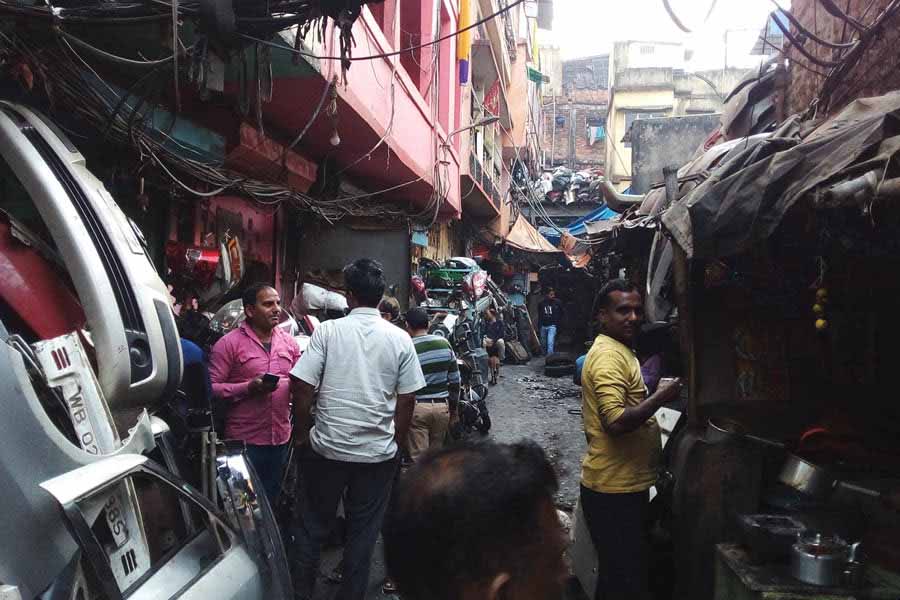
Proud accessories of past vehicles stacked one above the other, hoping for that one more foray on the roads
Many untruths have found their way into the local parlance leading among which is the story that suggests that if you were visiting the market in search of used tyres for your car, there was a good chance that your tyres would be removed and sold to you and you would return to find your car perched on bricks.
Many such stories abound but none of them is true as no such victim has ever recorded such a happening. The reason for the stigma possibly lay next door which bears the name of Madhusudhan Haat or the more prevalent ‘Chor Haat’.
The reason for such a name is not clear but indeed, even today truckloads of clothes, mostly used, that have arrived at the docks are sold here at throwaway prices. The suspicion that hovered over the very low and unreal prices led many to voice that these must be stolen clothes. And, that malady spread and the automobile dealers feel that they too must pay the price for activities next door even though all such shipments arrive with their proper documents.
Then again, the kidnap and eventual murder of a certain Jay Gupta some years back has invited stringent attention of the administration and so that has rattled many of those who are conducting business here. The fear has settled in even as the police and the government attend to any disputes with utmost promptness.
Casting a stigma aside is a Herculean task for all enterprises and this plagues business at Mullick Bazaar’s automobile market. Even as adjectives such as ‘dubious’, ‘suspicious-nature’, ‘untrustworthy’ or even ‘questionable’ abound – none of such is strong enough to belittle the importance of this very relevant part of Kolkata city’s automobile scenario. For many, this market remains the one answer for continuance and hope.

